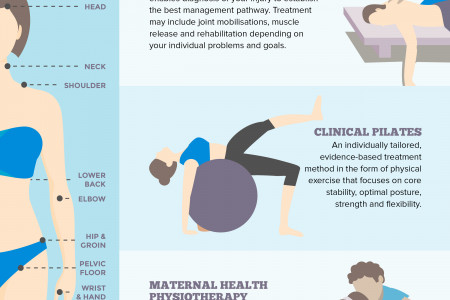
The Business of Post-Acute Care
THE BUSINESS of POST-ACUTE Care By 2026, the market for long term care in the U.S. will reach more than $737 BILLION → Yet, nursing homes have faced increasing closures over the last 2 decades Nursing Homes: STRUGGLING To Make Ends Meet In 2018, More than By 2060, HALF. 52 million that number will nearly double, to of AMERICANS 95 million AMERICANS Americans over 65 – were 65+ WILL NEED LONG TERM CARE in their lifetime DESPITE GROWING DEMAND, nursing homes are closing their doors From 1999-2019 1 in 7 will need assistance for MORE THAN 5 YEARS 50% of hospital-based nursing facilities closed* of certified nursing homes closed* -16% CLOSED facilities Why Do Nursing Homes FAIL? 10% rural nursing homes have closed or merged *From 1999-2008 Medicaid Reimbursement Overspending Waste Medicare, Medicaid & The Cost Of CARE In 1935, the Social Security Act jumpstarted a private nursing home industry By 1965, 60% of residents received public 60% assistance But, as federal funding increased, so did concern over quality of care In 1960, 44% of beds failed to meet fire and health standards In 1965, Medicare & Medicaid began tying public funding to a standard of care MEDIÇARE and MEDICAID Only 12% of nursing homes met certification standards that year Medicare pays for 20 days of long term care subsidizes the & cost of days 21-100 After that, residents pay $50,000-100,000 a year - until they have exhausted their assets and Medicaid begins to cover costs Today, 67% of nursing home care in the U.S. is paid by Medicare and Medicaid Across the country, many states* have seen increas costs that outstripped inflation Often, Medicaid reimbursements are less than the cost of care long term care 2017 Medicaid Shortfall Per Patient Massachusetts New Jersey Wisconsin New York *California, Florida, New York and Texas $39.85 $47.12 a day $63.71 $64.18 a day a day a day Long term care facilities face many of the same challenges - CHIEF AMONG THEM managing costs and maintaining profits, without compromising quality of care The Post-Acute Care ECOSYSTEM The Continuum Of Care Adult Day Care Independent Living In-Home Care Assisted Nursing Homes Living 3,651,400 patients 1,166,400 patients 179,200 patients 757,900 patients 2015- 2016 Why Costs Are Rising? Labor Costs Changing Needs Transitional Care Shortage of skilled caregivers means Aging Americans need more specialized care Specialized care brings higher costs Higher wages needed to attract talent More diagnoses of Alzheimer's and dementia Since 2001, post-acute care has shifted from hospitals to nursing homes More overtime for limited staff Many wait to seek help, meaning their conditions are more advanced This shift brought increases in therapy staffing and supply costs To ensure quality, Medicare and Medicaid penalize hospitals if patients are readmitted within 30 days – prompting hospitals to stop transfers to nursing homes with high readmission rates Payroll accounts for up to 75% of long term care operating costs - cutting back on staff would mean cutting quality of care 1 in 10 Americans over 65 have been diagnosed with Alzheimer's or dementia - conditions that require specialized memory care Food Service The Old Solution: Construction Group Purchasing Cutting back on payroll could have a negative impact on quality of care - So facilities must look elsewhere to contain costs GPOS help save on supply costs Group purchasing alone is no longer enough to bridge the gap Nursing, Housekeeping & Maintenance What's MISSING? Transformative Cost Management Expense Management Best Practices Collect, evaluate, and report spending data to improve efficiency Interdisciplinary product, supplier and expense reviews to ensure comprehensive cost management Ongoing cost and spend evaluations focused on maximizing sustainable performance pathways Smaller, more frequent deliveries to reduce excess inventory and free up cash The Missing Link PRIMESOURCE HEALTHCARE SOLUTIONS Offers customizable, transparent cost-benefit solutions focused on managing costs, contracts and GPOS, combining • Reliable and transformative expense management • Comprehensive best practices • Expansive vendor network • Procurement software solutions Empowers owners and operators to strengthen financial and operational outcomes PrimeSourceHCS.com Sources: STOP COST FAILURES & NURSING HOME CLOSURES ncbi.nlm.nih.gov/books/NBK217552 cdc.gov/nchs/data/hus/2018/fig17.pdf nebi.nlm.nih.gov/pmc/articles/PMC3816000 nebi.nlm.nih.gov/pmc/articles/PMC2699923 ncbi.nlm.nih.go/pmc/articles/PMC4476054 Advanced cost-benefit practices save nursing homes from failure cdc.gov/nchs/fastats/nursing-home-care.htm healthaffairs.org/doi/full/10.1377/hlthaff.2009.0494 natho.org/pdfs/KPMG_2011 Nursing LaborCostStudy.pdf nytimes.com/2019/03/04/us/rural-nursing-homes-closure.html longtermcare.acl.gov/medicare-medicaid-more/medicare.html alz.org/media/documents/alzheimers-facts-and-figures-2019-r.pdf PrimeSourceHCS.com jamanetwork.com/journals/jamainternalmedicine/fullarticle/227255 healthcarefinancenews.com/news/7-ways-lean-healthcare-management-reduces-cost census.gov/library/stories/2019/12/by-2030-all-baby-boomers-will-be-age-65-or-older.html DEVELOPED BY acl.gov/sites/default/files/Aging%20and%20Disability%20in%20America/2018OlderAmericansProfile.pdf N NOWSOURCING ahcancal.org/facility_operations/medicaid/Documents/2017%20Shortfall%20Methodology%20Summary.pdf bloomberg.com/news/articles/2019-06-25/u-s-nursing-home-costs-may-get-worse-thanks-to-a-labor-shortage aspe.hhs.gov/basic-report/long-term-services-and-supports-older-americans-risks-and-financing-research-brief newsroom.genworth.com/2018-10-16-Genworths-15th-Annual-Cost-of-Care-Survey-Shows-Continuing-Rise-in-Long-Term-Care-Costs newsroom.genworth.com/2019-11-20-Genworth-Cost-of-Care-Survey-2019-Most-Long-Term-Care-Costs-In-lowa-Increased-Year-over-Year reportbuyer.com/product/5785365/u-s-long-term-care-market-size-share-and-trends-analysis-report-by-service-competitive-landscape-and-segment-forecasts-2019-2026.html Pharmacy Office Supplies Rehabilitation pdical.continenc THE BUSINESS of POST-ACUTE Care By 2026, the market for long term care in the U.S. will reach more than $737 BILLION → Yet, nursing homes have faced increasing closures over the last 2 decades Nursing Homes: STRUGGLING To Make Ends Meet More than In 2018, By 2060, HALF. 52 million that number will nearly double, to of AMERICANS 95 million AMERICANS were 65+ Americans over 65 – WILL NEED LONG TERM CARE in their lifetime DESPITE GROWING DEMAND, nursing homes are closing their doors From 1999-2019 1 in 7 will need assistance for MORE THAN 5 YEARS 50% of hospital-based nursing facilities closed* CLOSED facilities -16% of certified nursing homes closed* Why Do Nursing Homes FAIL? 10% rural nursing homes have closed or merged *From 1999-2008 Overspending Waste Medicaid Reimbursement Medicare, Medicaid & The Cost Of CARE In 1935, the Social Security Act jumpstarted a private nursing home industry By 1965, 60% of residents received public 60% assistance But, as federal funding increased, so did concern over quality of care In 1960, 44% of beds failed to meet fire and health standards In 1965, Medicare & Medicaid began tying public funding to a standard of care MEDIÇARE F and MEDICAID Only 12% of nursing homes met certification standards that year Medicare pays for 20 days of long term care subsidizes the & cost of days 21-100 After that, residents pay $50,000-100,000 a year - until they have exhausted their assets and Medicaid begins to cover costs Today, 67% of nursing home care in the U.S. is paid by Medicare and Medicaid Across the country, many states* have seen increas costs that outstripped inflation Often, Medicaid reimbursements are less than the cost of care long term care 2017 Medicaid Shortfall Per Patient *California, Florida, New York and Texas Massachusetts New Jersey Wisconsin New York $39.85 $47.12 a day $63.71 $64.18 a day a day a day Long term care facilities face many of the same challenges - CHIEF AMONG THEM managing costs and maintaining profits, without compromising quality of care The Post-Acute Care ECOSYSTEM The Continuum Of Care Independent Living In-Home Care Adult Day Care Assisted Nursing Homes Living 3,651,400 patients 179,200 patients 757,900 patients 1,166,400 patients 2015- 2016 Why Costs Are Rising? Labor Costs Changing Needs Transitional Care Shortage of skilled caregivers means Aging Americans need more specialized care Specialized care brings higher costs Higher wages needed to attract talent More diagnoses of Alzheimer's and dementia Since 2001, post-acute care has shifted from hospitals to nursing homes More overtime for limited staff Many wait to seek help, meaning their conditions are more advanced This shift brought increases in therapy staffing and supply costs Payroll accounts for up to 75% of long term care operating costs - cutting back on staff would mean cutting quality of care To ensure quality, Medicare and Medicaid penalize hospitals if patients are readmitted within 30 days – prompting hospitals to stop transfers to nursing homes with high readmission rates 1 in 10 Americans over 65 have been diagnosed with Alzheimer's or dementia - conditions that require specialized memory care Food Service The Old Solution: Construction Group Purchasing Cutting back on payroll could have a negative impact on quality of care - So facilities must look elsewhere to contain costs GPOS help save on supply costs Group purchasing alone is no longer enough to bridge the gap pdical.continenc Nursing, Housekeeping & Maintenance What's MISSING? Transformative Cost Management Expense Management Best Practices Collect, evaluate, and report spending data to improve efficiency Interdisciplinary product, supplier and expense reviews to ensure comprehensive cost management Smaller, more frequent deliveries to reduce excess inventory and free up cash Ongoing cost and spend evaluations focused on maximizing sustainable performance pathways The Missing Link PRIMESOURCE HEALTHCARE SOLUTIONS Offers customizable, transparent cost-benefit solutions focused on managing costs, contracts and GPOS, combining • Reliable and transformative expense management • Comprehensive best practices • Expansive vendor network • Procurement software solutions Empowers owners and operators to strengthen financial and operational outcomes PrimeSourceHCS.com Sources: STOP COST FAILURES & NURSING HOME CLOSURES ncbi.nlm.nih.gov/books/NBK217552 cdc.gov/nchs/data/hus/2018/fig17.pdf nebi.nlm.nih.gov/pmc/articles/PMC3816000 nebi.nlm.nih.gov/pmc/articles/PMC2699923 ncbi.nlm.nih.go/pmc/articles/PMC4476054 Advanced cost-benefit practices save nursing homes from failure cdc.gov/nchs/fastats/nursing-home-care.htm healthaffairs.org/doi/full/10.1377/hlthaff.2009.0494 natho.org/pdfs/KPMG_2011 Nursing LaborCostStudy.pdf nytimes.com/2019/03/04/us/rural-nursing-homes-closure.html longtermcare.acl.gov/medicare-medicaid-more/medicare.html alz.org/media/documents/alzheimers-facts-and-figures-2019-r.pdf PrimeSourceHCS.com jamanetwork.com/journals/jamainternalmedicine/fullarticle/227255 healthcarefinancenews.com/news/7-ways-lean-healthcare-management-reduces-cost census.gov/library/stories/2019/12/by-2030-all-baby-boomers-will-be-age-65-or-older.html DEVELOPED BY acl.gov/sites/default/files/Aging%20and%20Disability%20in%20America/2018OlderAmericansProfile.pdf N NOWSOURCING ahcancal.org/facility_operations/medicaid/Documents/2017%20Shortfall%20Methodology%20Summary.pdf bloomberg.com/news/articles/2019-06-25/u-s-nursing-home-costs-may-get-worse-thanks-to-a-labor-shortage aspe.hhs.gov/basic-report/long-term-services-and-supports-older-americans-risks-and-financing-research-brief newsroom.genworth.com/2018-10-16-Genworths-15th-Annual-Cost-of-Care-Survey-Shows-Continuing-Rise-in-Long-Term-Care-Costs newsroom.genworth.com/2019-11-20-Genworth-Cost-of-Care-Survey-2019-Most-Long-Term-Care-Costs-In-lowa-Increased-Year-over-Year reportbuyer.com/product/5785365/u-s-long-term-care-market-size-share-and-trends-analysis-report-by-service-competitive-landscape-and-segment-forecasts-2019-2026.html Pharmacy Office Supplies Rehabilitation
The Business of Post-Acute Care
Source
http://prime...try-stats/Category
HealthGet a Quote











